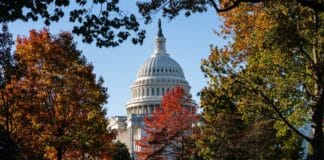New actions by the Trump Administration aimed at reviving the coal industry are sparking optimism for a “coal comeback” in Kentucky, one of the nation’s top coal-reliant states. With 68% of its energy coming from coal, Kentucky ranks third in the U.S. for coal-based energy use, behind only West Virginia and Wyoming, according to the U.S. Energy Information Administration.
During a visit to the White House for the signing of the executive orders, Kentucky Senate President Robert Stivers expressed hope for what he called a necessary shift in federal energy priorities. “We’re slashing unnecessary regulations that targeted the beautiful clean coal,” President Trump said during the signing.
The new policy directives aim to cut red tape around leasing and permitting on federal lands for coal mining. They also redirect funding from renewable energy initiatives back into coal-fired power plants, allowing them to be upgraded rather than decommissioned.
“To help upgrade them, make them more efficient, more environmentally friendly,” said Stivers. “To basically invest in them instead of shutting them down when they still have five, 10, 15 years of useful life.”
Stivers, who represents eastern Kentucky coal country, believes the policy shift could spur economic recovery with a coal comeback. “When things went down in the coal industry, we saw an outmigration of almost 40,000 people, and when that happened, that hurts the school system. It hurts your property taxes, it hurts your businesses, and it’s hard to come back,” he said.
Kentucky is home to one in five U.S. coal mines, second only to West Virginia in total mine count.
However, environmental groups are pushing back. Elisa Owen of the Sierra Club criticized the move as a political stunt that benefits coal executives more than workers or communities. “Again and again, politicians fly through coal country with false promises about revitalizing industry… ‘Reviving coal’ has always been about coal executives, not coal country,” she said.
Stivers argues for a balanced approach to energy. “There’s no doubt that we’re going to have to change in this nation some of our thought processes about energy production and dispatchability and reliability,” he said. “But for now, this is the cheapest, most reliable, affordable, dispatchable energy source we have.”





